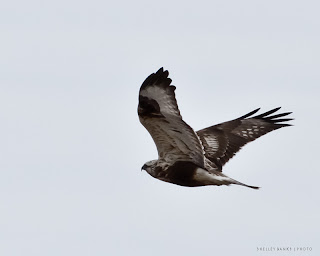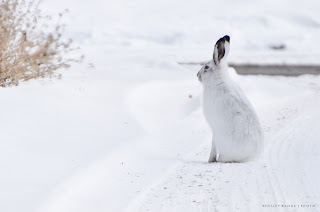 |
| Prairie Gopher stands and watches from dry grass at the side of the road.© SB |
Prairie gophers, aka Richardson's Ground Squirrels, are a common sight for summer drivers here. The gophers sunbathe on or skitter across small highways and grid roads. When cars approach, they scramble away — or stop and stare. (The lucky ones then skitter on.)
Most gophers seem shy and afraid of humans — a reasonable stance in a place where some (most?) humans see these ground squirrels as such significant pests (because of burrows and wide-ranging appetites) that people have been trapping, poisoning and shooting gophers — and cutting their tails off — since the first homesteaders arrived. (Got to love "civilization.")
Pests? Perhaps.
But gophers remind me of meerkats posing by their dens. And the curiosity and sociable spirit they share, living in colonies and all, seems admirable.
And exotic! I've heard stories of eastern Canadian and European tourists more fascinated by these tiny creatures than by any of our other larger animals. (Yes, they need to see prairie dogs, that is true...)
Perhaps we need more photographers to capitalize on the cuteness of gophers?
A (massive green-clothed) gopher has long been the mascot for a local sport team. What other opportunities might there be for gophers to promote Saskatchewan?
What is this? A Richardson's Ground Squirrel, locally known as a gopher.
Location: North of Regina, Along Route 99, east of Craven, Saskatchewan.
Photo date: March 25, 2012.
~~~~~










.jpg)


















